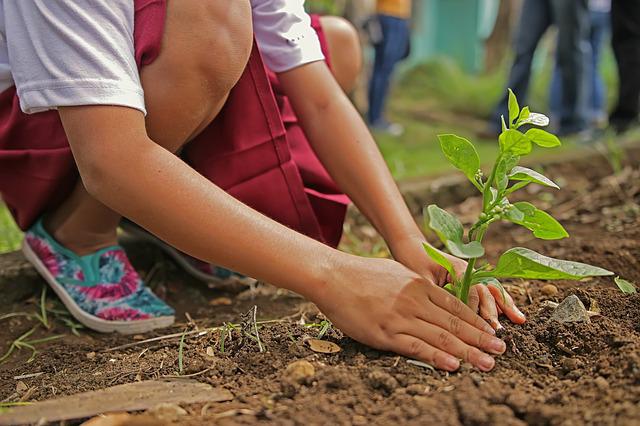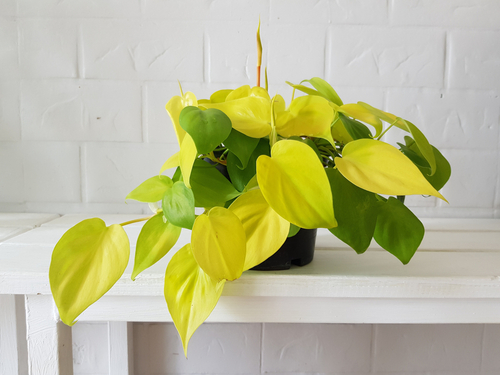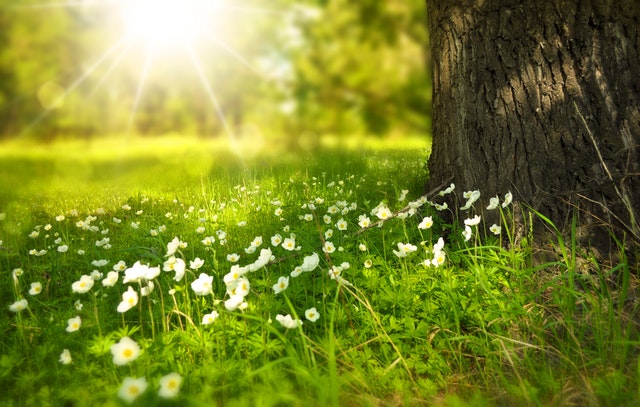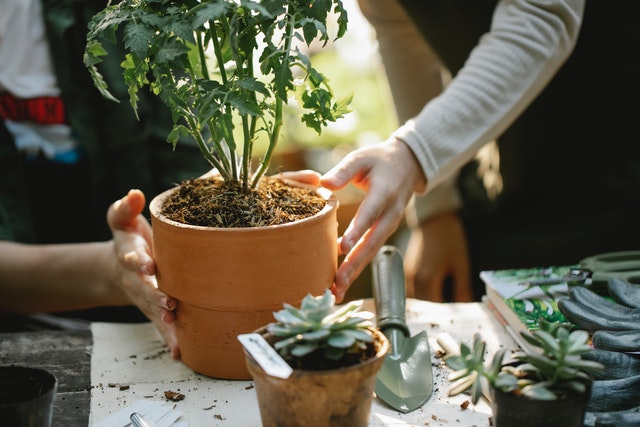For anyone desiring to pick up gardening as a new hobby, a philodendron is a perfect option. They are very forgiving and do not require too much maintenance.
There are almost 500 species of philodendron in existence. The lemon lime philodendron, in particular, is one of the most famous variants suitable for any new plant parent. It is called such because of its greenish-yellow leaves. You’ll want to include this in your collection!
Want to learn more about this philodendron variant? We’ve got all your questions below!
Lemon Lime Philodendron Care

Before it became popular, the lemon lime philodendron used to be considered a rare tropical plant. But now, you can easily find it online.
As a philodendron, the lemon lime variant carries the same heart-like leaves. But it is most noticeable because of its greenish-yellow hue, which it is named after. At first, its leaves may appear pink. But as they mature, the leaves start to turn neon yellow and green.
It is also one of the philodendron varieties that leaves a trail. The plant itself grows to about a foot in height before its stems start to bend. At this point, the plant starts to appear like a vine.
This plant is easy-to-grow and maintain. They are one of the few indoor plants that are forgiving and will survive even when they are neglected.
You can put them in an area with indirect sunlight and warm temperature and they will continue to thrive. They do not have very high demands when it comes to fertilization and lighting.
These are the very reasons why they are preferred by many first-time plant parents.
Origin and Classification
Scientifically, this plant is known as the philodendron hederaceum. The tropical plant can be found in the rainforests of South and Central America.
Its discovery can be attributed to European explorers, who decided to bring the plant back to Europe. This is when the philodendron started to become a popular houseplant.
Features of the Lemon Lime Philodendron

As mentioned, the lemon lime philodendron is most famous for its greenish-yellow, heart-shaped leaves. It is also an evergreen plant, which means its leaves will stay green all-year round.
When grown indoors, its leaves can grow to a length of 8 inches and its stem can reach nearly 12 inches. But if planted outside, the plant can grow even bigger than this. Either way, the plant’s stem starts to droop and dangle as it matures.
1.) Height
The lemon lime philodendron is actually a medium-sized plant that can grow from 10 to 12 inches tall. But despite this, its stem droops from 8 to 12 inches. If grown in its natural habitat, the stems can grow even longer than this length.
If you plan on growing the plant indoors, you can maintain your lemon lime plant by trimming it regularly. This will allow the plant to become lush and reach a certain size only.
2.) Flowers & Leaves
As mentioned, the leaves of the lemon line philodendron plant stand out because of its greenish-yellow color. They also have a heart shape, as a typical characteristic of most philodendrons. Its leaves can grow 7 to 8 inches long and have a width of an inch.
If you have a new plant, they typically have more leaves and growth from its base. As a result, the plant appears more compact and lush.
3.) Foliage & Stem
While the lemon lime philodendron can be grown indoors, its foliage can only grow up to 10 inches in height and an inch wide. But once left in its natural habitat, the plant has been found to grow bigger.
Once the stem elongates, it starts to bend downwards and fall to the ground like a vine. New leaves start with a pinkish-yellow tone to it. But as it matures, it starts to lose that hue and become neon or lime green.
4.) Evergreen
One of the things people like about this plant is that it is an evergreen plant. This means that its leaves stay green throughout the year. Even with minimal care, your plant will look fresh all the time.
Basic Care of Lemon Lime Philodendron
Since it is a forgiving plant, it is so easy to take care of the lemon lime philodendron. In fact, this is one of the traits of the philodendron that make it a suitable option for any new plant parent.
Despite this, there are some things you need to do to make sure that your plant stays healthy and happy.
1.) Size & Growth
Many opt to grow the lemon lime philodendron indoors because it is suitable for that environment. Its full potential to grow, however, gets stunned indoors.
In its native environment, these plants can grow larger than the ones grown indoors. Still, it isn’t a factor that should stop you from placing this plant inside your home.
2.) Light Requirements

One of the reasons why this is a perfect indoor plant is because it can do well even in low light conditions. If you opt to grow the plant outdoors, place it in an area where it gets bright indirect light so that it grows faster and produces more leaves.
Avoid placing in direct sunlight as this will result in burnt foliage.
3.) Water Requirements
While lemon lime philodendron care does not require too much of your time and effort, you still need to make sure that it gets watered.
As a rule, you should only water when the top soil starts to become dry. Let the liquid flow through the drainage at the pot’s bottom hole but make sure to discard accumulated water in the saucer.
If the leaves start turning yellow, it means that you are overwatering it.
4.) Soil Requirements
The soil of the philodendron lemon lime needs to be moist, loose, and well-draining. If you are mixing your own soil, avoid using sandy soils since they aren’t loose enough. Instead, you can use a traditional soil or potting mix with peat so the roots can easily expand.
These plants prefer slightly acidic to alkaline soil (6.0 to 8.0 pH), which includes regular garden soil.
5.) Sunlight Requirements
The lemon lime thrives best in low light. But if you want your plant to grow quickly, it will need to be placed in an area with bright, indirect light; like underneath a canopy.
You should avoid placing this plant under direct sunlight for long periods of time since it will burn and damage the leaves.
6.) Temperature & Humidity
This plant grows well in an area with temperatures of 65-80 degrees during the day. And at night, the temperature should be above 55 degrees. Place the plant away from drafts, especially in winter.
As for humidity, this philodendron variety does okay with basic household humidity. If you want to encourage larger leaves to grow, you need to expose it to higher humidity. You can keep your plant healthy by occasionally misting it.
7.) Drought & Disease Resistance
The common diseases that affect this plant include root rot, fungal illness, and bacterial infections. Avoid over watering the plant as it could lead to any of these illnesses.
You can avoid common illnesses with proper lemon lime philodendron care. This includes providing abundant air circulation to the plant and by avoiding overwatering.
8.) Toxicity
If you have pets and small babies at home, you need to keep this plant away from their reach. This is because philodendron leaves are known to be toxic to both pets and humans.
Some of the symptoms from accidental ingestion include stomach irritation, vomiting, and lip and tongue swelling.
9.) Fertilizing
To encourage your lemon lime philodendron to grow, you can give it diluted household plant feed. If you don’t let your plant feed properly, its growth will be greatly affected.
The best time to feed your plant is during the spring and summer season since it grows fast. You can reduce fertilizer application during the winter season as the plant’s growth slows down.
10.) Potting & Repotting

If you need to repot your lemon lime plant, the best practice is to keep the soil from its original pot intact. This way, you can avoid root disturbance in the new pot.
You can repot the plant in a larger pot using a spade. It’s best that you use a clay pot or all-natural terracotta to avoid root diseases.
11.) Pruning Requirements
Whenever you spot any discolored, damaged, or dead leaves and stems, make sure to trim them out using clean, sharp scissors. You can snip the stem just above its leaf node.
You can prevent clogged pores by frequently washing its leaves. Avoid tearing the leaves as this might bruise the plant.
If the plant is not producing enough leaves, you can encourage it to do so by making small cuts near its nodes.
How to Propagate Lemon Lime Philodendron
There are a couple of ways to propagate your lemon lime philodendron. You can opt to propagate cuttings in water or in a potting mix.
Water Propagation
- Harvest some stem cuttings during the spring or summer months. Choose a healthy spot for the cuttings, ideally new growth. Pick a stem with two to three nodes.
- Place the cuttings in a bowl containing lukewarm water. Remove all of the leaves except the two on top.
- Place the bowl in an area with bright, indirect light. Remember to replace the water in the cup every couple of days.
- If you have a plant humidifier at home, you can place it near the bowl so you can increase the humidity levels.
- You also need to check the temperature around the cutting to make sure that it is at least 70 degrees Fahrenheit.
Potting Mix Propagation
- Again, harvest some stem cuttings during the spring or summer months. Choose a healthy spot for the cuttings, ideally new growth. Pick a stem with two to three nodes.
- Remove the leaves that might go in the garden soil. You can plant the stem cutting directly into the soil by placing it gently. A good practice is to start in small 4-inch containers.
- Keep its humidity level high by maintaining soil moisture. You should also remember to keep the area warm with at least 70 degrees Fahrenheit. This helps stimulate faster development of its roots.
Common Problems Caring For Lemon Lime Philodendron
Even though the lemon lime plant is a forgiving plant, there may be some problems that will stop you from getting a healthy plant. It is typically easy to care for this indoor plant. But still, these are the common problems that may occur when you’re growing this plant:
1.) Its Leaves Are Turning Yellow
It can be hard to tell that your lemon lime plant’s leaves are turning yellow because its color is naturally light. But if you spot yellow leaves, it simply means you are overwatering the plant.
The best way you can address this is by allowing the plant to dry until its leaves start drooping a bit. When this happens, you can water the soil heavily again until it starts to drain from the bottom.
Afterwards, you can return to your regular schedule.
2.) Its Leaves Are Curling

Meanwhile, if your philodendron’s leaves start to wilt and soften, it is a sign that the plant needs more watering. You can rehydrate the soil of your lemon lime plant by saturating its container with water.
Don’t let too much water sit on the container. Instead, check if the water is draining through the bottom hole.
After fixing this problem, remember to regularly water your plant as soon as the top half of its soil becomes dry.
3.) It Starts Developing Brown Spots
This is a common problem that lemon lime philodendrons encounter. When you spot brown spots on your leaves, it usually indicates leaf spot disease. This is commonly caused by bacteria and fungus from outdoors.
If you don’t remedy this problem right away, your plant may die. You can treat it by using some fungicide.
4.) Its Leaves Are Drooping
When you notice that the leaves of your lemon lime plant are drooping, it may be because it is not getting enough light.
But it could also mean that your plant lacks nutrients or downy mildew. Another reason for this problem could also be an infestation of mealybugs.
5.) It’s Not Growing Quickly
If you notice that your plant has not sprouted any new growth, it could be because the environment is too cold for the plant. This is a tropical plant that loves being in an area with 65-80 degrees Fahrenheit.
You can also try moving your plant to warmer areas in your home. Avoid putting it near vents or windows.
See more on plant care: How To Save A Dying Rubber Tree Plant?
Outro
Lemon lime philodendron care doesn’t require you to be a seasoned planter. It is a tolerable plant and doesn’t require too much maintenance.
Even if you are just starting to have an indoor plant collection, the lemon lime plant is a great addition to your home. Its greenish-yellow leaves are always a delight to look at and can even help reduce anxiety and stress by simply looking at them.
In addition to its decorative appeal, this plant can help purify the air in your house. They are known for removing almost all indoor toxins.
Buying Options
The lemon lime philodendron plant can be purchased on Amazon and Etsy. The price for the plant varies so to get the cheapest price check both marketplaces.
Click on the links below to check the prices.
Check Price on Amazon
Check Price on Etsy
Frequently Asked Questions
How much light does a lemon lime philodendron need?
It requires 75 to 85 percent of sunlight exposure throughout a day. It is best to put the plant in an area with bright yet indirect light.
Is Philodendron Lemon Lime an indoor plant?
Although the lemon lime plant originated in the rainforests of South and Central America, it can be grown indoors. The only difference, however, is that the plant will not grow as big if it is kept indoors.
Why is my lemon lime philodendron dying?
Some of the common reasons why your lemon lime philodendron may die is because of underwatering, overwatering, too much light exposure, or cold temperature. You will see if your philodendron is having these issues when its leaves start to droop, turn yellow, or turn brown.

Hey, I’m Lisa and I’ve been an avid gardener for over 30 years. I love writing, talking and living in the garden! Feel free to connect with me on my socials below
